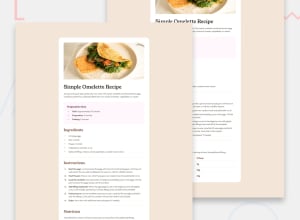
Design comparison
Solution retrospective
What I'm Proud Of:
Responsive Design: I successfully created a responsive page that adapts well to different screen sizes.
Learning New Elements and CSS Properties: I expanded my knowledge by working with various HTML elements like and , as well as CSS properties such as media queries and pseudo-elements.
Attention to Detail: I made a concerted effort to replicate the original design closely with Chrome Dev Tools always at hand.
What I would do differently next time:
Plan and Prototype: Before diving into coding, I would spend more time on planning and creating wireframes or prototypes (provided I do not have a Pro Subscription).
What challenges did you encounter, and how did you overcome them?Challenges Encountered:
Table Sizing and Responsiveness: I struggled with figuring out how to size and style the table effectively to ensure it was responsive. Understanding how to use and elements properly, along with setting widths and borders, was initially confusing.
Styling Bullet Points in Lists: I found it challenging to style bullet points in lists to match the design requirements. Using pseudo-elements was a new concept for me, and I had to experiment to achieve the desired look.
How I Overcame These Challenges:
Research and Documentation: To tackle the table styling issue, I spent time researching best practices for table design and responsiveness. I referred to documentation and tutorials that explained how to use CSS properties like width: 100%, border-collapse, and how to apply styles to and elements effectively.
What specific areas of your project would you like help with?Areas for Help:
Code Semantics: I would appreciate a review of my HTML structure to ensure that I am using semantic elements correctly. I want to confirm that I am using tags like , , , , and appropriately to enhance accessibility.
Responsiveness: I would like assistance in evaluating how well my design adapts to different screen sizes. Any suggestions for improving the responsiveness of any of the elements would also be appreciated.
Code Conciseness: I am interested in having my CSS reviewed for conciseness and efficiency. I want to ensure that I am not repeating styles unnecessarily and that I am using best practices for CSS organization.
Community feedback
Please log in to post a comment
Log in with GitHubJoin our Discord community
Join thousands of Frontend Mentor community members taking the challenges, sharing resources, helping each other, and chatting about all things front-end!
Join our Discord
